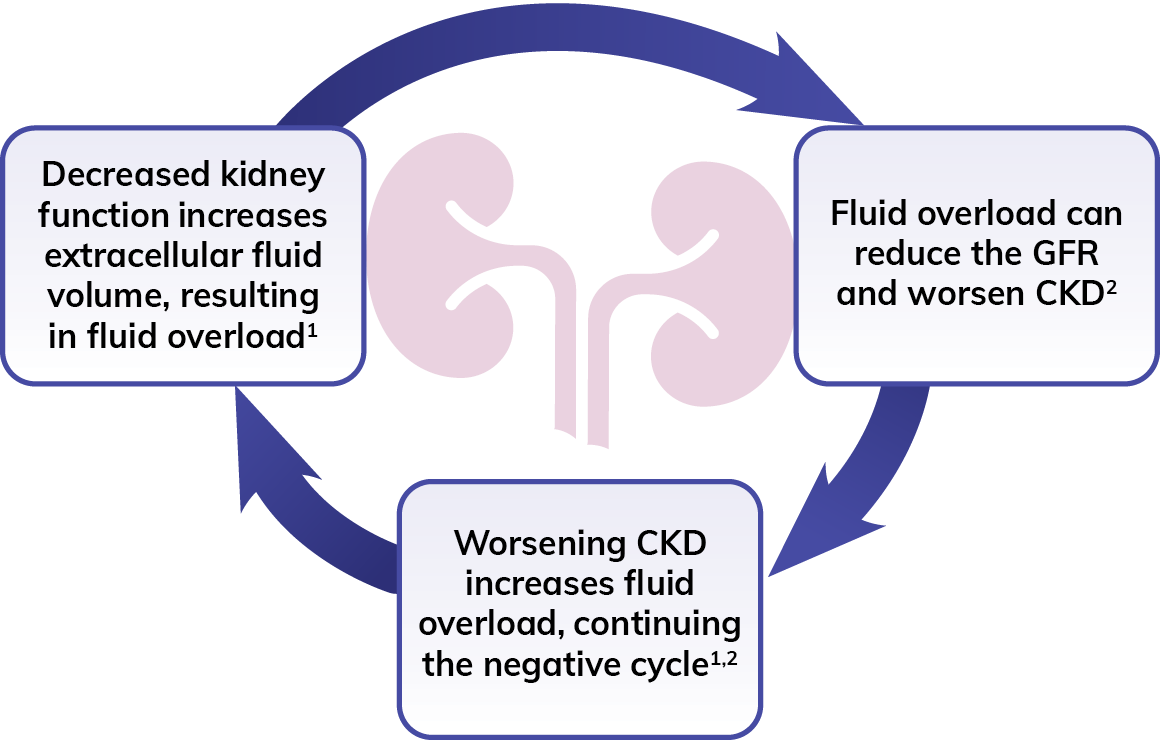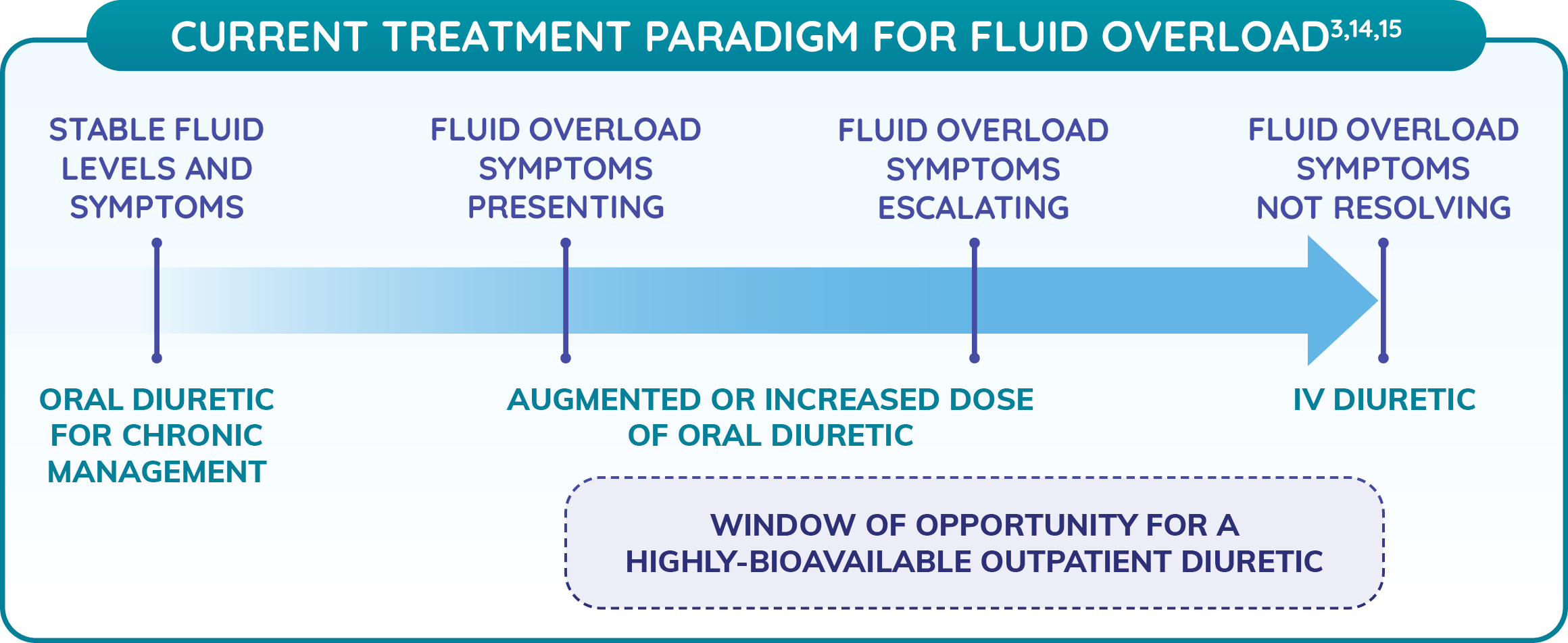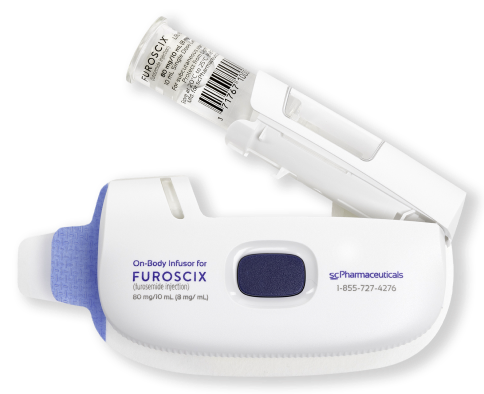
As soon as your chronic kidney disease (CKD) and cardiorenal patients begin to experience symptoms of fluid overload—despite maintenance therapy,
it’s time for a different move.
FLUID OVERLOAD: A VICIOUS CYCLE

Ongoing fluid overload is connected to:
Ongoing fluid overload is connected to:
- CKD progression1
- Cardiovascular complications—especially congestive heart failure3
- Reduced quality of life4
- Higher healthcare costs5,6
- Significantly increased patient mortality7

the role of bioavailability in treating fluid overload
Gut edema caused by fluid overload can impede the absorption of oral diuretics, compromising their bioavailability.3,12,13 Despite full or maximum oral dose therapy, fluid overload (and related symptoms) may continue or worsen.4
While IV loop diuretics can avoid intestinal absorption challenges and offer greater bioavailability, their administration often necessitates hospitalization with its associated patient risks and burdens.4

As soon as your CKD and cardiorenal patients experience signs and symptoms of fluid overload despite maintenance diuretic therapy,
it’s time for FUROSCIX.
*
Based on mean ± SD 30-minute plasma concentration of 600 (± 209) ng/mL.3
GFR=glomerular filtration rate; SD=standard deviation.

FUROSCIX delivers a fixed 80 mg of medication over 5 hours18:
- 30 mg in the first hour
- 12.5 mg per hour for the next 4 hours
FUROSCIX is indicated for the treatment of edema (i.e., congestion, fluid overload, or hypervolemia) in adult patients with chronic heart failure or chronic kidney disease (CKD), including the nephrotic syndrome.
FUROSCIX is not for chronic use and should be replaced with oral diuretics as soon as practical.
patients can benefit from furoscix as soon as fluid overload signs or symptoms present3,4,14,18

consider furoscix at the onset of fluid overload signs and symptoms, such as19:
Early intervention
Encourage your patients to recognize and report symptoms of fluid overload as soon as they present. This allows you the opportunity to intercept episodes of fluid overload before they worsen.